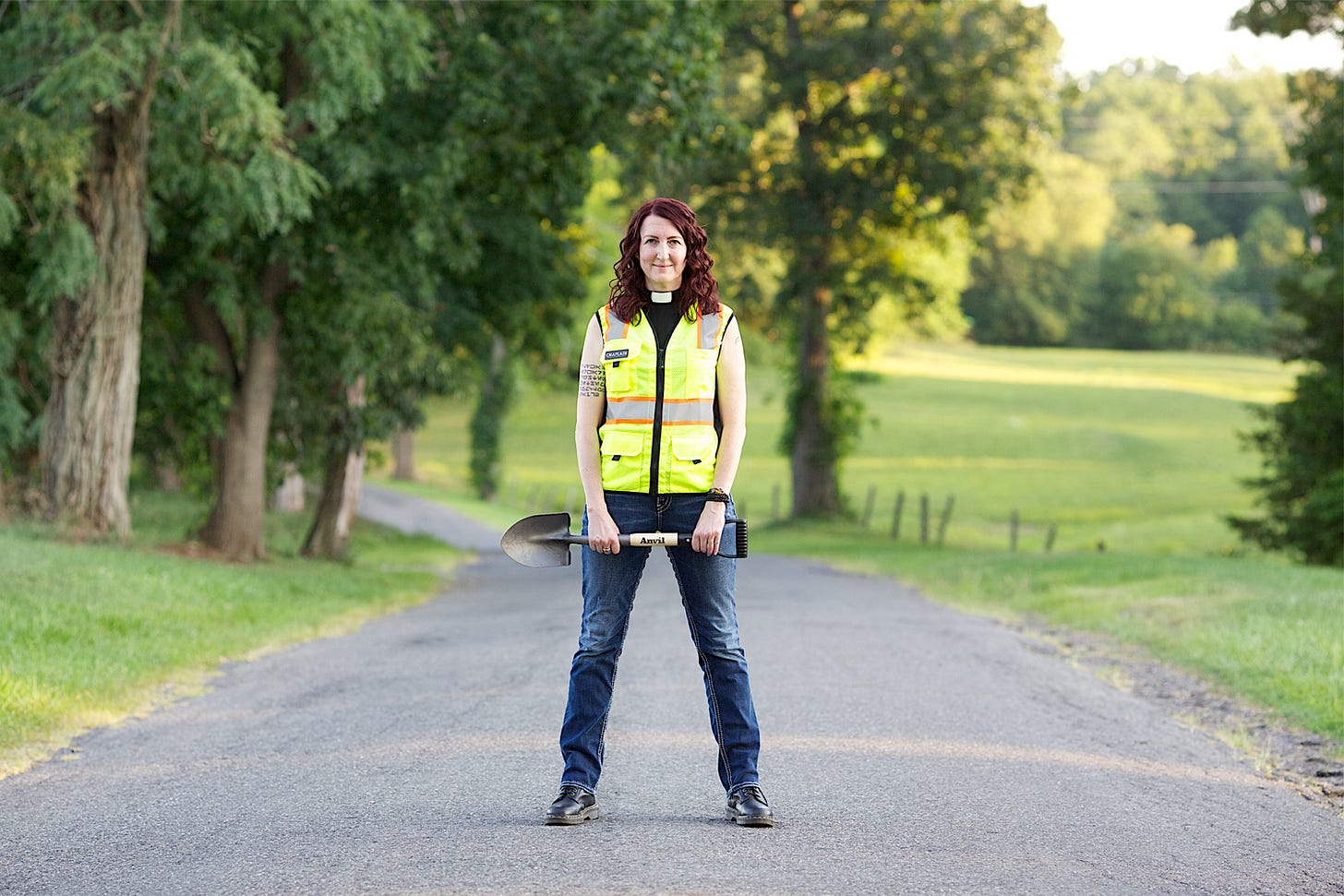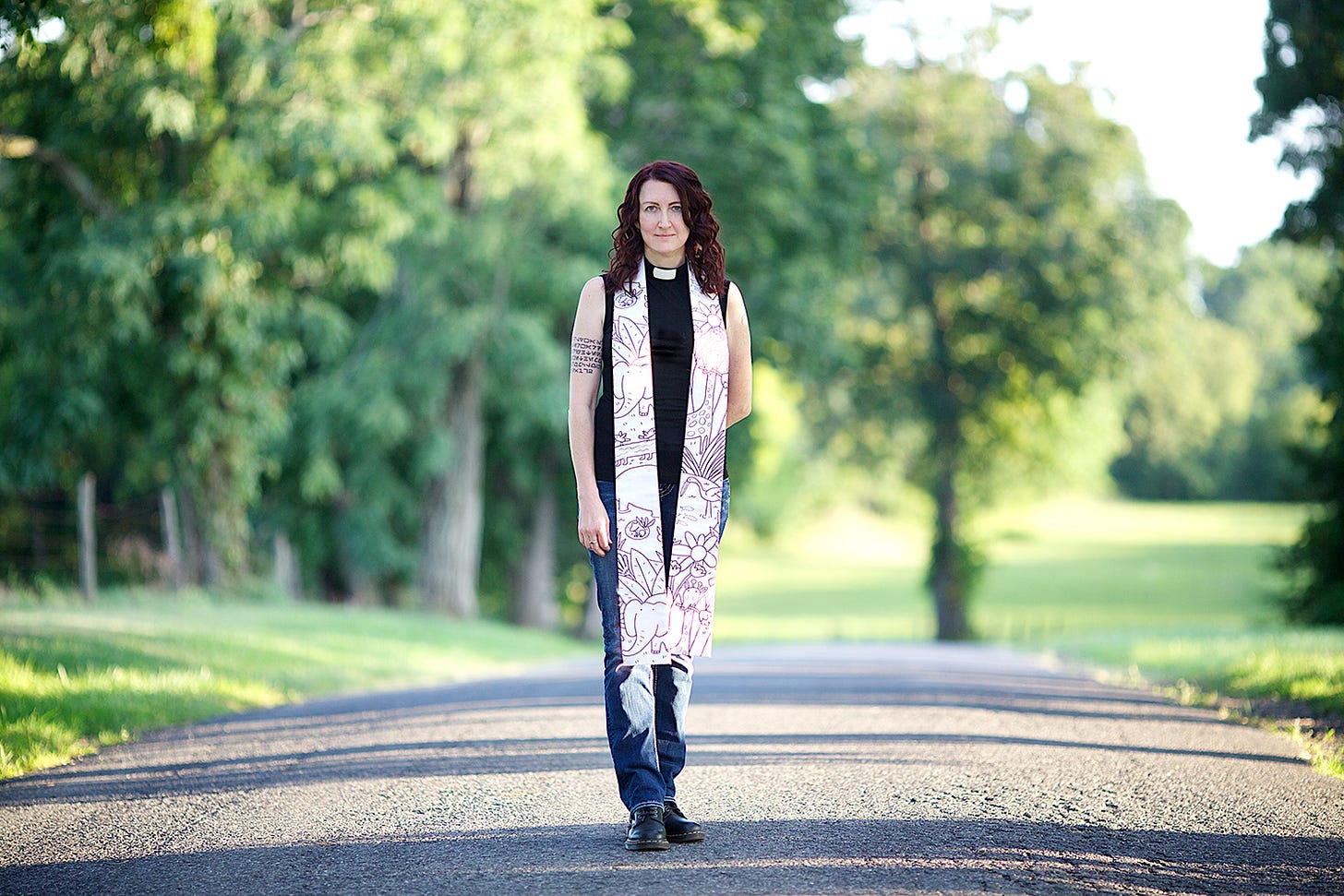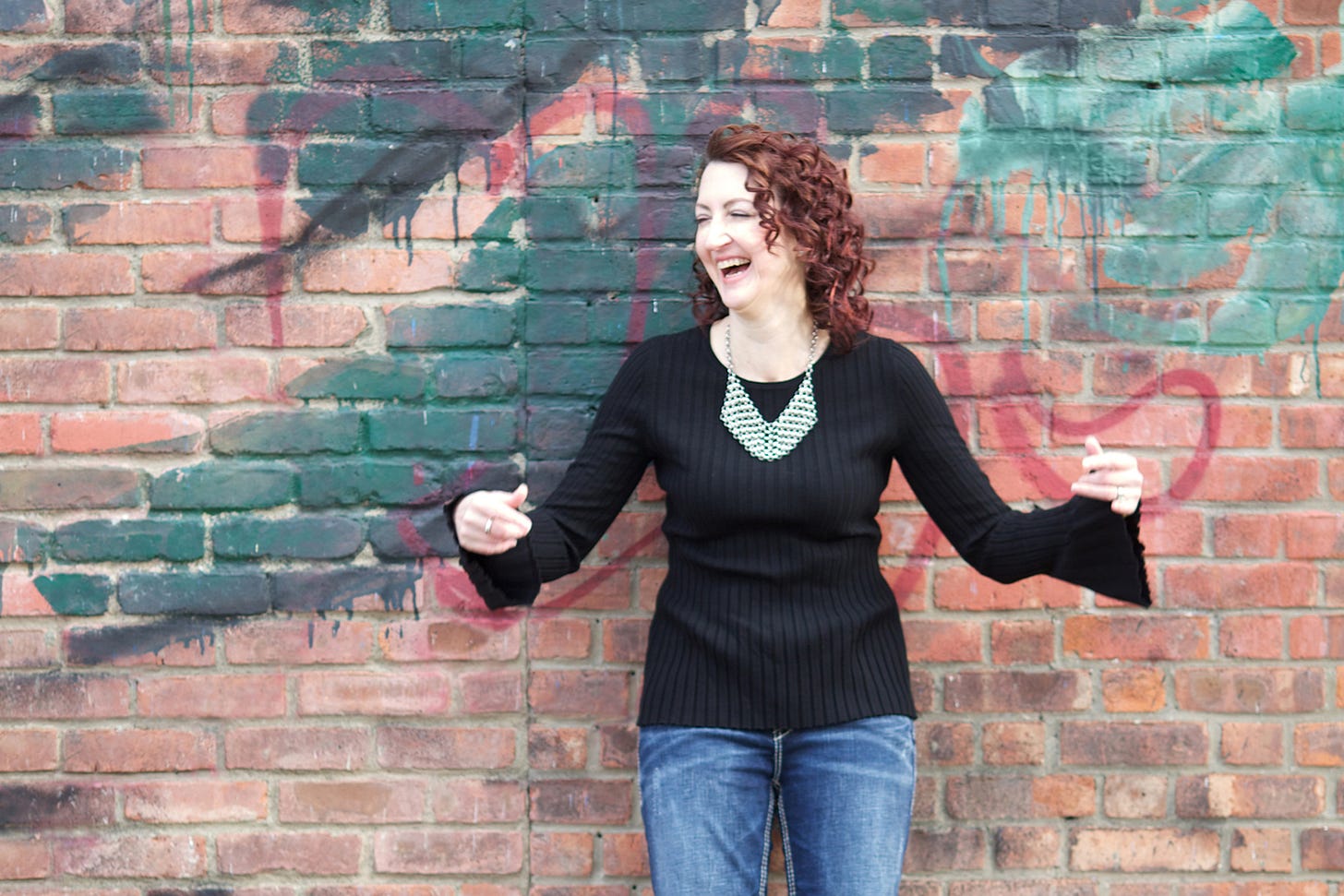Sarah Bowen
Animal chaplain. Author. Academic dean at One Spirit Interfaith Seminary.
Update from February 21, 2025: This interview was originally published on August 22, 2021.
Hello friends,
I “discovered” Sarah Bowen (aka @modernreverend) on Instagram, where I had the good fortune to win a copy of her first book Spiritual Rebel (Monkfish Publishing, 2019) in a draw last year. That book, “inspired by her childhood fascination with Star Wars” drew me in and kept me engaged with its wit and wisdom. It also set me back into the wider world armed with some simple but profound spiritual practices based on philosophical, scientific, religious, and (pop) cultural traditions she’d explored.
I am so grateful to Sarah for sharing more of her musings with me so I can share them with you in today’s issue of Sifting, shifting, and lifting . . . a weekly column in which I ask clever, curious, compassionate people my three favourite questions.
If you aren’t yet familiar with the Rev. Sarah Bowen, it is my honour and delight to introduce you now.
Especially interested in the intersection of spiritual values with animal and planetary welfare, (Rev) Sarah Bowen is an animal chaplain, award-winning author, and academic dean at One Spirit Interfaith Seminary in New York City. Sarah teaches interspecies mindfulness practices, supports humans experiencing animal loss and grief, and advocates fiercely for the more-than-human world. You can often find her huddled over wildlife struck by cars, giving them a sacred sendoff, or leading a Sunday Service at the world’s first interfaith, interspiritual, and interspecies community Compassion Consortium.
Sarah is a columnist for Spirituality & Health Magazine and the co-host of Unity Online Radio’s Big Universe show. Her book, Spiritual Rebel: A Positively Addictive Guide to Finding Deeper Perspective and Higher Purpose, won a Nautilus Book Award. Her newest book is Sacred Sendoffs: An Animal Chaplain’s Advice For Surviving Animal Loss, Making Life Meaningful, & Healing The Planet (forthcoming from Monkfish Publishing).
Sarah, what issue is engaging your head, heart, and hands right now?
I’m heartbroken by human exceptionalism and its cousins speciesism and environmental racism. Anthrozoologists, social justice advocates, and everyday animal lovers have long pointed to the entangled issues that cause humans to ransack the planet and hurt the other creatures we share it with—human and other-than-human alike. Relegating marginalized peoples to an invisible “workforce” and other sentient beings to so-called “resources,” we have somehow become a species that fuels poverty, pollutes oceans, clear-cuts rainforests, and imprisons other animals through factory farming.
Humans make up just 0.01% of life on this planet. Things exist in this world that aren’t solely for us: stuff we can’t see, hear, smell, or experience. If we now know that other-than-human-animals can think, feel, and act autonomously, why do we stop our compassion and concern at human animals? Shifting our awareness to include all species—not just ours—can help us better balance the needs of all life.
Accordingly, I spend a lot of time talking to people about animals: their ability to have strong bonds, spiritual experiences, and grieve their own losses. And about how our daily choices affect others we share the planet with. In Spiritual Rebel, I provide people with exercises for coming into balance with the natural world and our supernatural connections. And in my newest book Sacred Sendoffs, I explore how learning more about the deaths of our beloved pets, farmed animals, wild creatures, and animal astronauts can help us improve life for all beings on Earth.
What artist or work of art has had a profound impact on the way you see the world and your place in it?
Some of my best shifts have happened in art museums! By moving from a thinking environment to a sensing environment, I can disconnect my analytical brain and ponder on an extraverbal level. I rarely read museum catalogs or do advance research, preferring to be surprised at what I find.
The Chalkroom, a virtual reality installation by Laurie Andersen and Hsin-Chien Huang, changed my life in a mere ten minutes. Within this exhibit, you sit in a dark black-lit room covered in glowing graffiti—words and squiggles on every surface. Donning a VR headset and holding two controllers in your hands, you can fly through a dark purple city maze, all covered in words. As you pass scrawled phrases, you hear them read to you, snippets of thoughts combining randomly based on where you choose to travel. Off in the distance is a hazy sun peering through the dimness. The environment itself is magnificent. But that’s not all.
Using the controllers I held in each hand, I could fly in and through the buildings at breakneck speed. It was exhilarating. My brain was processing virtual reality as reality. And then I saw a bright white glowing cube in the distance. I flew towards it, stopping abruptly right at its base. Then I walked right smack into it. My field of vision glowed full white-hot light. I sat there in the whiteness. It hummed and resonated a tone. Then, disappointingly, the museum attendant came to tell me my time was over. She inquired, “How was it?” I replied, “I don’t want to ever leave.” And for a moment, I meant it. It was a truly spiritual experience. I had touched a dark mysterious bliss. My consciousness had expanded again. This was no mere art exhibit. Not entertainment. No game for tweens. I was forever changed.
As I wandered through the rest of the museum, everything else paled in comparison. I felt as if I was now in the un-reality, in a dream state. It took a while for me to sync back up to this reality. But when I did, I found, intriguingly, that I felt intensely connected to birds and flying insects, both of which I had never had much interest in, preferring furry creatures—my own speciesist preferences! Somehow, the act of flying helped me shift awareness to what life might be like for creatures who travel the world through flight. This awareness has stayed and expanded my work into concern for the perils facing bees and birds. About 187 species of birds have gone exinct and 14% of the 37,400 species threatened with extinction are birds. And we all know the sad crisis facing bees.
There are so many good people and organizations working to transform themselves and our world through compassionate action. Who would you like to lift up?
One need not be a full-time animal activist to help open people’s eyes to the problems of human exceptionalism, speciesism, and environmental racism. Learn how to make compassionate purchasing choices with LiveKindly. Spend just a few minutes signing a life-saving petition from In Defense of Animals or Mercy for Animals. Get involved in food justice by eating local, sustainable, plant-based foods raised by people making a living wage. And if you find an injured animal, stop to alert a local wildlife rehabilitator. Get a list of people near you ready to help through Animal Help Now.
Finally, if you’d like to learn more about the intersection of the natural world and our supernatural connections, please join me on the fourth Sunday of any month at the Compassion Consortium.
Follow Sarah on Instagram at modernreverend and learn more about her work at http://www.thisissarahbowen.com/
Before you go
Would you do me a small favour? If you enjoy reading Sift. Shift. Lift. please take a moment to like, share, or comment below. It is a simple gesture, but it gives new-ish publications like Sift. Shift. Lift.—and creators like me—a much-appreciated boost.
Thank you my friends.
Not yet a subscriber? Pull up a chair. There is always room for one more.
Coming up next:
The Weekly (August 25, 2021)
Sifting, shifting, and lifting with . . . Scott Aasman (August 29, 2021)
Did you miss an issue?
Here are the links to the last two issues (just in case):
The August issue of Sift. Shift. Lift. on the Oka Crisis (August, 20, 2021)
The Weekly on the fall of Saigon and Taliban victory in Kabul (August 18, 2021)






